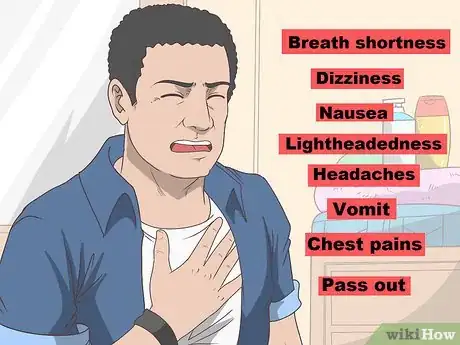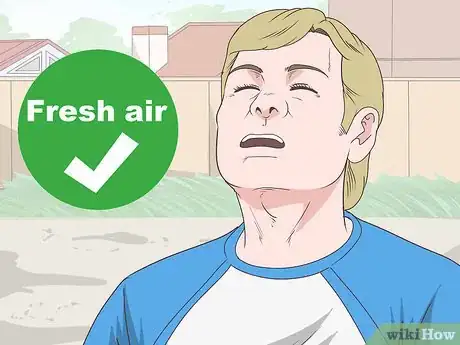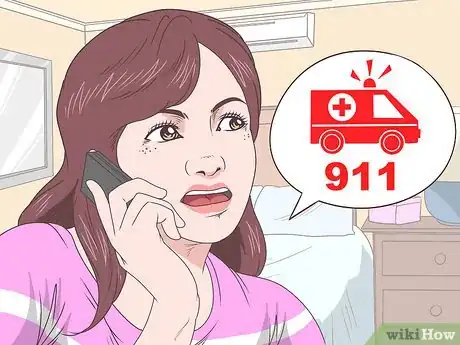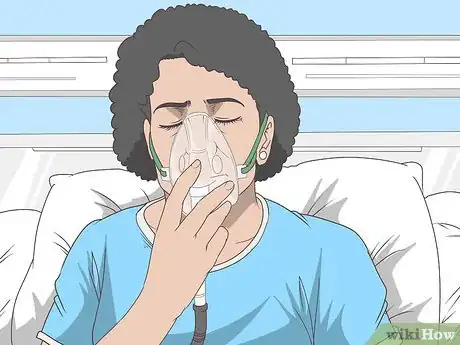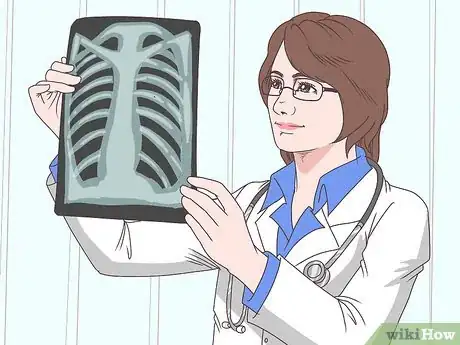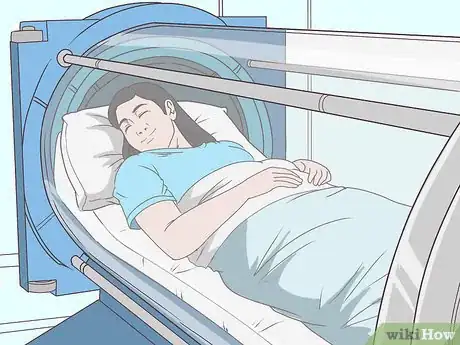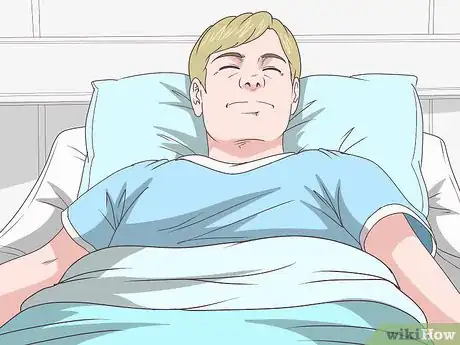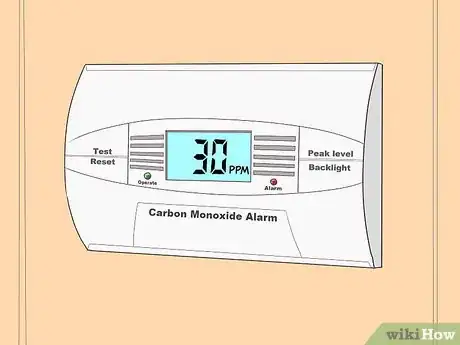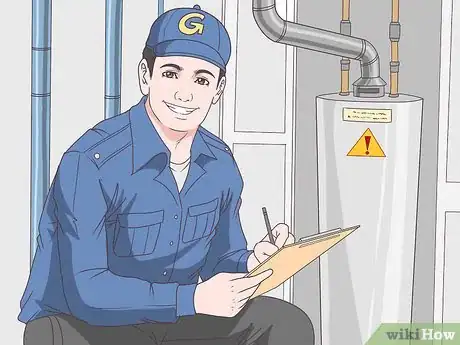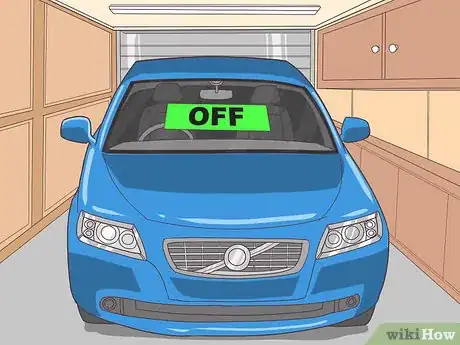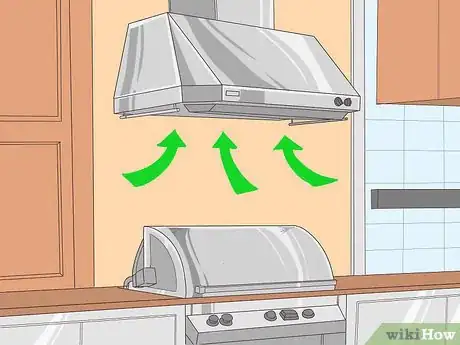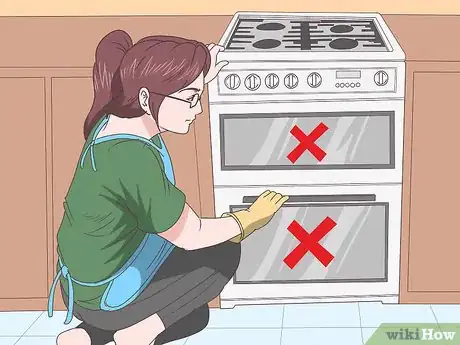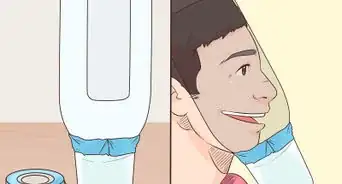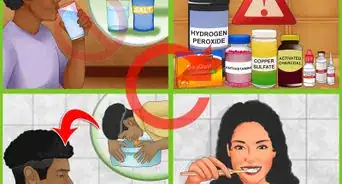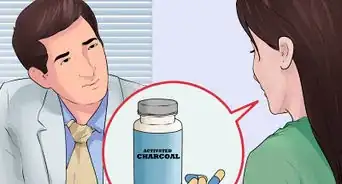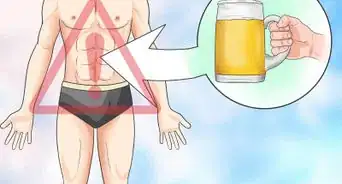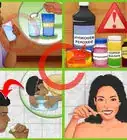This article was medically reviewed by Sarah Gehrke, RN, MS. Sarah Gehrke is a Registered Nurse and Licensed Massage Therapist in Texas. Sarah has over 10 years of experience teaching and practicing phlebotomy and intravenous (IV) therapy using physical, psychological, and emotional support. She received her Massage Therapist License from the Amarillo Massage Therapy Institute in 2008 and a M.S. in Nursing from the University of Phoenix in 2013.
There are 9 references cited in this article, which can be found at the bottom of the page.
This article has been viewed 31,398 times.
If you have gas lines in your house, you may have wondered how carbon monoxide poisoning is treated. It's an important concern! Carbon monoxide poisoning can happen in places where you have gas heating or a gas stove. It can also happen if a car is running in an enclosed space. If you suspect you have carbon monoxide poisoning, whether you notice symptoms or smell gas, your first action should be to get out into fresh air. Then, you'll need to get medical help from the hospital.
Steps
Taking Immediate Steps
-
1Pay attention to symptoms. Carbon monoxide gives very specific symptoms. You may notice shortness of breath, dizziness, nausea, lightheadedness, and headaches. It can also cause confusion and weakness. You may even vomit, have chest pains, or pass out. Sometimes carbon monoxide poisoning feels like you have the flu.[1]
- However, keep in mind these symptoms can indicate other health issues.
-
2Move to fresh air. If you suspect you are getting carbon monoxide poisoning, you need to get out of the area. Go outside, and take deep breaths of fresh air to help cleanse the carbon monoxide from your system.[2]Advertisement
-
3Call 911. Even when you get out of the area, you still need emergency medical help. Call emergency services if you think you or someone else has carbon monoxide poisoning.[3]
- It's helpful to know the person's weight, age, general condition, and how long they've been exposed to carbon monoxide to tell the operator.[4]
- Never drive yourself to the hospital if you think you have carbon monoxide poisoning. You could lose consciousness at the wheel.
Getting Medical Assistance
-
1Expect to be put on pure oxygen. At the hospital, you will likely be given pure oxygen to breathe. To receive this oxygen, you'll need to have a mask placed over your mouth and nose.[5]
- You'll be placed on ventilation if you're having trouble breathing on your own.
-
2Be ready for tests. Once you're stabilized, you'll likely receive tests to measure the levels of oxygen in your blood. You may have blood and urine tests, x-rays, and EKGs.[6]
-
3Spend time in a hyperbaric oxygen chamber. With this treatment, they'll take you into a chamber. Inside the chamber, the rate of oxygen is higher than outside of the chamber. You won't notice much difference between inside and outside the chamber, except that you might feel slight pressure in your ears.[7]
-
4Be patient with recovery. Typically, carbon monoxide is removed from your system in 4 hours. If you pass out from carbon monoxide poisoning, you may experience relapses for several weeks. You may have headaches, fatigue, and foggy thinking. You might also be irritable.[8]
- If you're exposed for too long to carbon monoxide, you can have permanent organ damage or even permanent brain damage.
Preventing Carbon Monoxide Poisoning
-
1Install carbon monoxide detectors. Perhaps the best way to protect yourself against carbon monoxide poisoning is to purchase and install carbon monoxide detectors in your house. They sound an alarm if they detect carbon monoxide, so you can leave the house.
- Check the batteries in the spring and fall when you adjust the clocks.
-
2Call in the professionals. Anything that could potentially leak carbon monoxide should be serviced by a professional at least once a year. That includes gas stoves, gas water heaters, gas furnaces, and anything that burns coal or oil.
- Call your local gas company immediately if you smell natural gas or hear a hissing or roaring sound coming from a pipe.[9]
-
3Turn off your car when you're in an enclosed space. Cars release carbon monoxide, so you can get carbon monoxide poisoning if you let your car run in your garage. It can also leak carbon monoxide into your house. Turn off your car as soon as you enter your garage.[10]
-
4Check for proper ventilation. If you are burning anything in an oven or fireplace, it should be properly vented to the outside. Always check to make sure the flue is open to let the smoke out. Similarly, don't use a gas-powered generator or grill inside the garage or house.[11]
-
5Don't try to heat your house with a gas oven. If your heat is off, you may be tempted to try to heat the house by opening the door on your gas oven. However, that can leak dangerous amounts of carbon monoxide into your house, particularly if the fire goes out.
References
- ↑ https://www.cdc.gov/co/faqs.htm
- ↑ https://www.mayoclinic.org/diseases-conditions/carbon-monoxide/diagnosis-treatment/drc-20370646
- ↑ https://www.mayoclinic.org/diseases-conditions/carbon-monoxide/diagnosis-treatment/drc-20370646
- ↑ https://medlineplus.gov/ency/article/002804.htm
- ↑ https://www.mayoclinic.org/diseases-conditions/carbon-monoxide/diagnosis-treatment/drc-20370646
- ↑ https://medlineplus.gov/ency/article/002804.htm
- ↑ https://medlineplus.gov/ency/article/002375.htm
- ↑ https://www.abe.iastate.edu/extension-and-outreach/carbon-monoxide-poisoning-health-effects-aen-166/
- ↑ https://www.socalgas.com/stay-safe/emergency-information/natural-gas-leaks
